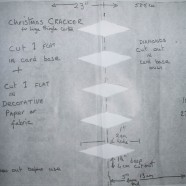Gavi – Castelvero
Gavi – Castelvero DOCG White Purchased: Sainsburys £7.69 (after price reduction & 5% bulk discount) Strength: 12% (9 Units) Grape: 100% Cortese grape traditionally grown in the area around the town of Gavi, where it gives dry, lemony white wines. This version is fermented in stainless steel tanks to give a clean and elegant flavour. Taste: Zesty, bright wine with fresh peach flavours and a long mineral finish When to have: It is ideal as an aperitif or with seafood. Serve chilled. Storage instructions: To enjoy this wine at its best, drink within 3 years of purchase History: Araldica are based in the Monferrato hills, in the south of the province of Asti, Piemonte. With access to a range of vineyard sites and sources of great quality grapes, Winemaker Claudio states that “Our intention has never been to follow an idle dream of making a great wine that is then impossible to find or difficult to afford. Our broader ambition has been to provide a range that is both understandable and accessible. Quite simply, wine for drinking and...
Read MoreVino Nobile di Montepulciano – Filicheto
Vino Nobile di Montepulciano – Filicheto DOCG Red Purchased: Majestic £7.99 (after £2 price reduction) Strength: 13% (9.8 Units) Grape: 90% Sangiovese 10% Canaiolo Nero. Aged for 24 months in oak casts. Sangiovese is the most widely planted red grape variety in Italy. It has strong associations with its spiritual home Tuscany, although it is also common in each of the other central Italian wine regions. The grape’s name translates literally as ‘Blood of Jove’ ), it is the principal vine variety for the majority Tuscany’s fine wines. It is the sole grape variety permitted for the prestigious Brunello di Montalcino, and is also dominant in Vino Nobile de Montepulciano. Throughout Tuscany, Sangiovese is now often blended withCabernet Sauvignon, whether for Chianti (where Cabernet Sauvignon must not exceed 15%) or Vino da Tavola. Taste: Layers of violet, cherry, tobacco and soft spices.Medium-plus body with well integrated tannins and a long dry finish. When to have: Best with food. Perfect with roasts or game meat Storage instructions: Ready for immediate drinking but can be stored for up to ten years. Vino Nobile di Montepulciano is one of the leading Italian wines that have put Tuscany, central Italy, on the world map. Its name derives from the picturesque hill town of Montepulciano, south-east of Siena. This area is centuries old and dates back to the Etruscans, if not earlier. In its prime during the 15th century, it was a favorite among the local Sienese aristocracy, and in the 16th century it was revered by Pope Paul III, who spoke of the wine’s excellent qualities. Vino Nobile di Montepulciano was written about in the poem ‘Bacco in Toscana’ (Bacchus in Tuscany) by Francesco Redi, who described it as ‘the king of all wines’, and the wine was also mentioned by renowned French writer Voltaire in his bookCandide....
Read MoreVerdicchio Dei Castelli Di Jesi Classico
Verdicchio Dei Castelli Di Jesi Classico DOC White Purchased: Sainsburys £6.64 (after price reduction & 5% bulk discount) Strength: 13% (9.8 Units) Grape: A minimum of 85% Verdicchio with Trebbiano and Malvasia permitted to fill in the remaining portions of wine. In addition to a still version both a sparkling spumante and sweet passito style are produced in the DOC from Verdicchio. Verdicchio is a white Italian wine grape variety grown primarily in the Marche region of central Italy.[1] The name Verdicchio derives from verde (or “green”) and refers to the slight green/yellow hue that wines made from the grape can have.] While ampelographers believe that Verdicchio is probably indigenous to the Marche, there appears to be a genetic relation to Trebbiano and Grecogrape varieties. In particular, the clones of Trebbiano grown in Lombardy and Soave show very close similarities to Verdicchio while genetic evidence has shown that Greco was probably an ancestor vine to nearly all of Italy’s native white grape varieties Taste: Dry, fresh and mellow, it proposes persistent and intense emanations fruity-floral (peach-tree and almond tree). When to have: best with fish, seafood, pesto pasta and grilled or barbecued white meats. Storage instructions: To enjoy this wine at its best, drink within 2 years of purchase The denomination of ” Verdicchio Classico dei Castelli di Jesi ” is only attributed to the Verdicchio produced in the most ancient original zone, at the center of the province of Ancona, (Castles of...
Read MoreNero D’avola – Torretta Di Mondelli
Nero D’avola – Torretta Di Mondelli IGP Red Purchased: Sainsburys £9.49 (after 5% bulk discount) Strength: 12.5% (9.4 Units) Grape: 100% Nero d’Avola (“Black of Avola” in Italian) is “the most important red wine grape in Sicily” and is one of Italy’s most important indigenous varieties. It is named after Avola in the far south of Sicily and its wines are compared to New World Shirazes, with sweet tannins and plum or peppery flavours. It also contributes to Marsala blends. Modern winemaking methods have brought out the best of the variety by emphasising softness, warmth and richness of fruit. Taste: This full-bodied, deeply-coloured red has damson fruit flavours and subtle notes of liquorice and anise. When to have: Serve at room temperature with grilled and barbecued meats. Storage instructions: To enjoy this wine at its best, drink within 5 years of purchase. History: “The Black Grape of Avola” appears to have been selected by growers near Avola (a small town in south east Sicily) several hundred years ago. Initially, it was confined to the southern tip of the island but more recently has spread throughout the island. Viticulture The vine likes hot arid climates. The districts around Noto (above all Buonivini, Bufalefi and Maccari) and Pachino in the south of the province of Siracusa are reputed for the quality of their Nero d’Avola grapes.[3] The first American producer of Nero d’Avola is Chiarito Vineyards in Ukiah, California (Mendocino...
Read MoreKnitted Christmas Trees
Oddments of wool with appropriately sized needles (eg DK with 3 – 4mm needles, 4ply with 2 ½ – 3 ½ mm) Optional – narrow ribbon for hanging loop, beads / sequins / beads for decoration on the trees Abbreviations; s2togkpo slip 2 sts together, k1, pass 2 slipped stitches over. Lower section Cast on 43 stitches and knit 2 rows. Next row (right side) K9, (k2tog) twice, k17, (k2tog) twice, k9. 39 sts K 1 row. Next row K8, (k2tog) twice, K15, (k2tog) twice, K8. 35 sts K 1 row. **Next row K7, (k2tog) twice, K13, (k2tog) twice, K7. 31 sts K 1 row. Next row K6, (k2tog) twice, K11, (k2tog) twice, K6. 27 sts K 1 row ***Next row K5, (k2tog) twice, K9, (k2tog) twice, K5. 23 sts K 1 row Next row K4, (k2tog) twice, K7, (k2tog) twice, K4. 19 sts K 1 row Next row K3, (k2tog) twice, K5, (k2tog) twice, K3. 15 sts K 1 row Next row K2, (k2tog) twice, K3, (k2tog) twice, K2. 11 sts K 1 row Next row K1, (k2tog) twice, K1, (k2tog) twice, K1. 7 sts K 1 row Next row K2tog, s2togkpo, k2tog. 3 sts K 1 row Next row S2togkpo. Fasten off. Centre Section Cast on 35 sts and knit 2 rows. Work as Lower Section from ** to end. Upper Section Cast on 27 sts and knit 2 rows. Work as Lower Section from *** to end. To make up Join back seam in each section, tread a length of ribbon or the remains of the stitching-up wool up through the tip of each section. Leave a loop at the top of the upper section, securing inside. Sew on beads or sequins as baubles...
Read More



